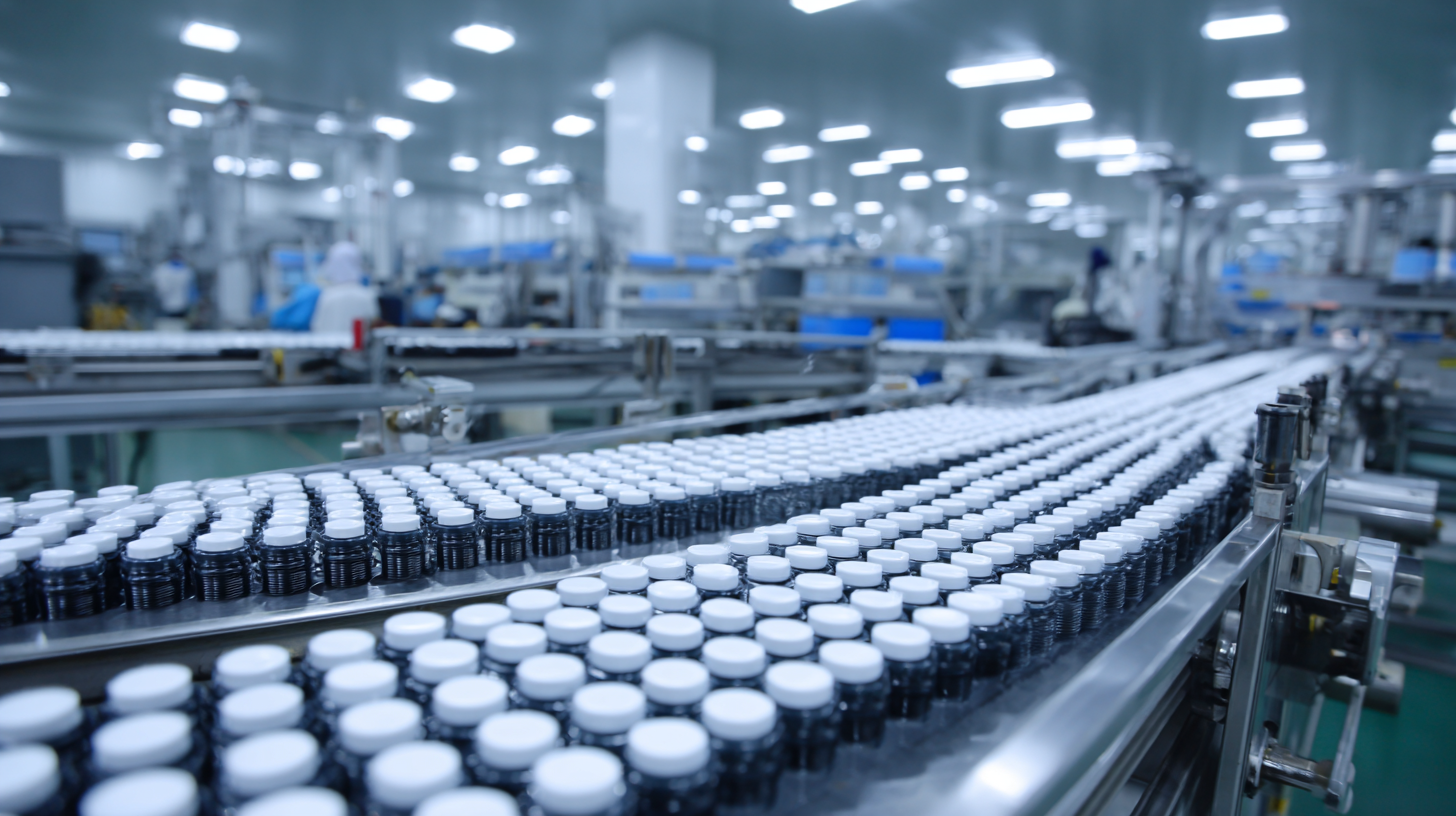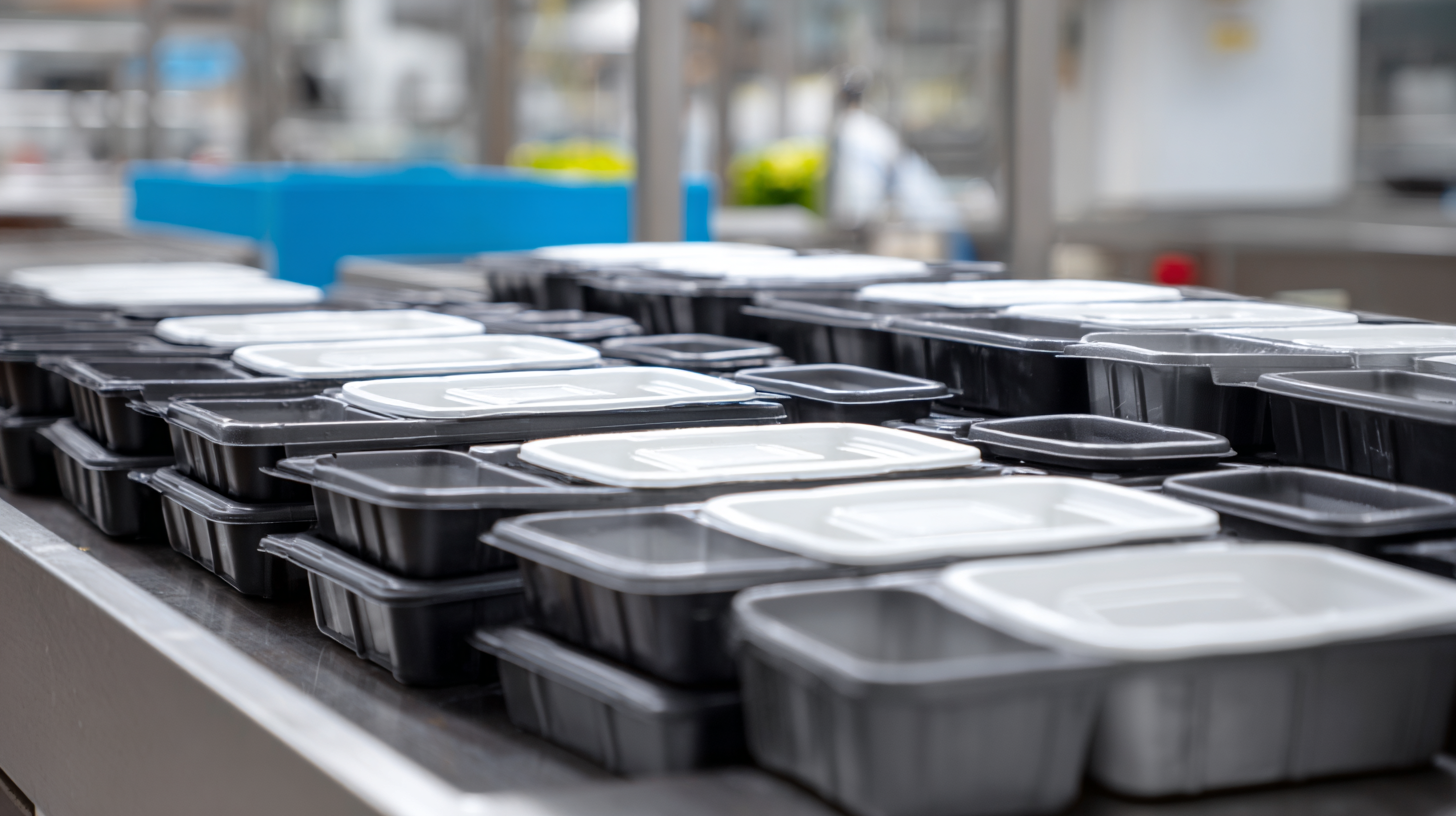Quality Focused China Made Thermoformed Trays Leading Global Exports
In recent years, the global demand for thermoformed trays has experienced significant growth, driven by advancements in packaging technology and an increasing emphasis on sustainability. According to a report by MarketsandMarkets, the thermoforming market is projected to reach USD 60 billion by 2025, with a substantial share attributed to the food and consumer goods sectors.
 China has emerged as a leading exporter of these innovative packaging solutions, leveraging its robust manufacturing capabilities and quality-focused production standards. As companies worldwide seek to enhance operational efficiency and reduce waste, the strategic development of high-quality thermoformed trays is becoming crucial. This blog will explore top strategies employed by Chinese manufacturers to maintain their edge in the global market, focusing on the balancing act between cost-effectiveness and product quality.
China has emerged as a leading exporter of these innovative packaging solutions, leveraging its robust manufacturing capabilities and quality-focused production standards. As companies worldwide seek to enhance operational efficiency and reduce waste, the strategic development of high-quality thermoformed trays is becoming crucial. This blog will explore top strategies employed by Chinese manufacturers to maintain their edge in the global market, focusing on the balancing act between cost-effectiveness and product quality.
Market Overview of China’s Thermoformed Tray Industry by 2025
The global meat packaging market is projected to reach a remarkable value of $51.95 billion in 2024 and is set to grow to approximately $55.04 billion by 2025, with further expansion anticipated, reaching around $85.49 billion by 2032. This significant growth is indicative of the increasing demand for quality packaging solutions, including thermoformed trays, which are essential for preserving meat products throughout the supply chain. China's thermoformed tray industry is poised to take advantage of this trend, positioning itself as a key player in the global exports market.

Simultaneously, the global plastic processing machinery market is expected to expand from $23.57 billion in 2025 to $34.62 billion by 2032, reflecting a compound annual growth rate (CAGR) of 5.6%. This trend underscores the urgency for innovative and sustainable solutions in packaging, further emphasizing the role of quality-focused manufacturing in China. As the industry adapts to changing consumer preferences and stringent regulations, it provides a lucrative opportunity for companies involved in the production of high-quality thermoformed trays, which can meet both domestic and international demand effectively.
Key Factors Driving the Growth of Thermoformed Tray Exports from China
Thermoformed trays have seen a significant rise in global exports from China, driven by several key factors. According to a recent report by MarketsandMarkets, the global thermoforming market is expected to grow from $15.74 billion in 2021 to $22.92 billion by 2026, with China playing a vital role in this expansion. The country's competitive manufacturing costs, advanced technology, and ability to produce high-quality products are attracting international buyers. With a sharpening focus on sustainability, more companies are opting for recyclable thermoformed trays, enhancing China's export appeal.
Moreover, China's strategic investments in automation and innovation have led to improved production efficiencies and product customizability. A report from Statista estimates that the adoption of automation in the manufacturing sector in China will reach a market value of approximately $64 billion by 2024, which will further bolster its export capabilities. Companies that prioritize quality and innovation in their production processes can stand out in the global market, tapping into the rising demand for eco-friendly and versatile packaging solutions.
Tips: When considering thermoformed trays for your business, assess your supplier’s quality certifications, and inquire about their sustainability practices. Additionally, stay informed on the latest trends in materials and design to ensure your packaging meets evolving consumer preferences. Engaging with experts in the industry can also provide invaluable insights into optimizing your supply chain for thermoformed products.
Comparative Analysis: China vs. Global Competitors in Thermoformed Trays
The competitive landscape of thermoformed trays is rapidly evolving, with China emerging as a dominant player on the global stage. A comparative analysis reveals that while countries like the United States and Germany have long been recognized for their quality manufacturing, China’s advancements in technology and production processes have gained substantial ground. Chinese manufacturers are not only able to produce high-quality trays that meet international standards, but they can also do so at a fraction of the cost, leveraging their economies of scale.

When considering sourcing options, businesses should keep a few tips in mind. First, prioritize suppliers who can demonstrate quality assurance processes; this will ensure that the products meet your specifications consistently. Secondly, engage in thorough market research to compare lead times and logistics capabilities, as faster delivery can significantly impact your operation's efficiency. Lastly, don't hesitate to visit manufacturing facilities when possible. This allows for firsthand observation of production practices and quality control measures, providing greater assurance in your sourcing decisions.
China's commitment to quality in thermoformed tray production serves as a benchmark for global competitors, pushing them to innovate and improve. As the market continues to grow, staying informed about these dynamics will be crucial for businesses looking to remain competitive in the international arena.
Best Practices for Ensuring Quality in Thermoformed Tray Production
In the competitive world of thermoformed tray production, maintaining a focus on quality is crucial for manufacturers aiming to excel in exports. Best practices for ensuring high-quality trays begin with carefully selecting raw materials. Using top-grade plastics not only enhances the durability and visual appeal of the trays but also ensures compliance with international standards. This foundational step sets the tone for the entire production process, leading to superior products that meet the stringent demands of global markets.
Moreover, implementing rigorous quality control measures throughout the manufacturing process can significantly boost the reliability of thermoformed trays. Regular inspections at various stages, from initial design to final output, help identify potential flaws early on. Employing advanced technologies such as automated testing and real-time monitoring can further enhance precision and efficiency. Additionally, fostering a culture of quality among employees through continuous training and workshops ensures that everyone is aligned with the quality goals. By prioritizing these best practices, manufacturers can effectively elevate their output, ensuring that China-made thermoformed trays remain in high demand on the global stage.
Future Trends and Innovations in Thermoforming Technology in China
The future of thermoforming technology in China appears bright, as innovations continue to shape the industry. According to a recent market report by ResearchAndMarkets, the global thermoforming market is projected to grow significantly, reaching approximately $12 billion by 2027, fueled by the increased demand for sustainable packaging solutions. As a leading player in this sector, China is not only focusing on quality but is also investing heavily in advanced machinery and eco-friendly materials, positioning itself as a key exporter in the global market.
To stay competitive, businesses in China should adopt and implement the latest technologies in thermoplastic processing. Embracing automation and smart manufacturing practices can enhance production efficiency and reduce waste. Implementing a robust quality control system is another essential aspect, ensuring that products not only meet but exceed international standards.
Tips for businesses looking to innovate in thermoforming include exploring biodegradable materials and incorporating recycled content into their products. Additionally, collaborating with research institutions can spur innovation, leading to the development of new applications that meet the evolving needs of consumers. By staying ahead of trends and adopting cutting-edge technologies, thermoforming companies in China can ensure they remain competitive on the global stage.
Quality Focused China Made Thermoformed Trays Leading Global Exports - Future Trends and Innovations in Thermoforming Technology in China
| Year | Total Exports (in billions USD) | Market Share (%) | Key Innovations | Sustainability Practices |
|---|---|---|---|---|
| 2021 | 2.5 | 25 | Biodegradable materials | Recycling programs initiated |
| 2022 | 3.0 | 30 | Smart manufacturing technologies | Reduction of plastic waste |
| 2023 | 4.0 | 35 | 3D printing integration | Use of recycled materials |
| 2024 (Projected) | 5.5 | 40 | Automation in production | Circular economy initiatives |